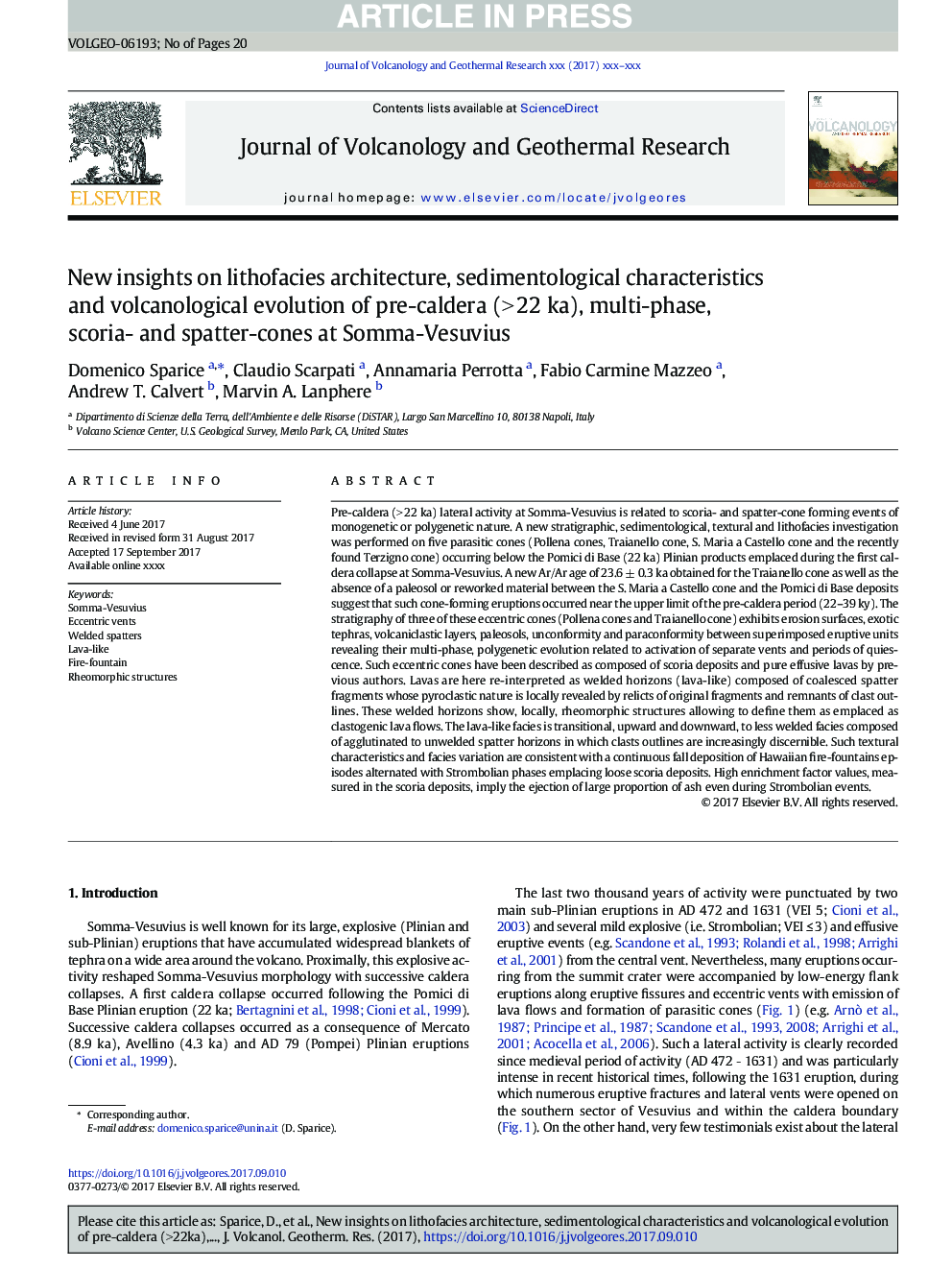| Article ID | Journal | Published Year | Pages | File Type |
|---|---|---|---|---|
| 8911457 | Journal of Volcanology and Geothermal Research | 2017 | 20 Pages |
Abstract
Pre-caldera (> 22 ka) lateral activity at Somma-Vesuvius is related to scoria- and spatter-cone forming events of monogenetic or polygenetic nature. A new stratigraphic, sedimentological, textural and lithofacies investigation was performed on five parasitic cones (Pollena cones, Traianello cone, S. Maria a Castello cone and the recently found Terzigno cone) occurring below the Pomici di Base (22 ka) Plinian products emplaced during the first caldera collapse at Somma-Vesuvius. A new Ar/Ar age of 23.6 ± 0.3 ka obtained for the Traianello cone as well as the absence of a paleosol or reworked material between the S. Maria a Castello cone and the Pomici di Base deposits suggest that such cone-forming eruptions occurred near the upper limit of the pre-caldera period (22-39 ky). The stratigraphy of three of these eccentric cones (Pollena cones and Traianello cone) exhibits erosion surfaces, exotic tephras, volcaniclastic layers, paleosols, unconformity and paraconformity between superimposed eruptive units revealing their multi-phase, polygenetic evolution related to activation of separate vents and periods of quiescence. Such eccentric cones have been described as composed of scoria deposits and pure effusive lavas by previous authors. Lavas are here re-interpreted as welded horizons (lava-like) composed of coalesced spatter fragments whose pyroclastic nature is locally revealed by relicts of original fragments and remnants of clast outlines. These welded horizons show, locally, rheomorphic structures allowing to define them as emplaced as clastogenic lava flows. The lava-like facies is transitional, upward and downward, to less welded facies composed of agglutinated to unwelded spatter horizons in which clasts outlines are increasingly discernible. Such textural characteristics and facies variation are consistent with a continuous fall deposition of Hawaiian fire-fountains episodes alternated with Strombolian phases emplacing loose scoria deposits. High enrichment factor values, measured in the scoria deposits, imply the ejection of large proportion of ash even during Strombolian events.
Keywords
Related Topics
Physical Sciences and Engineering
Earth and Planetary Sciences
Geochemistry and Petrology
Authors
Domenico Sparice, Claudio Scarpati, Annamaria Perrotta, Fabio Carmine Mazzeo, Andrew T. Calvert, Marvin A. Lanphere,
